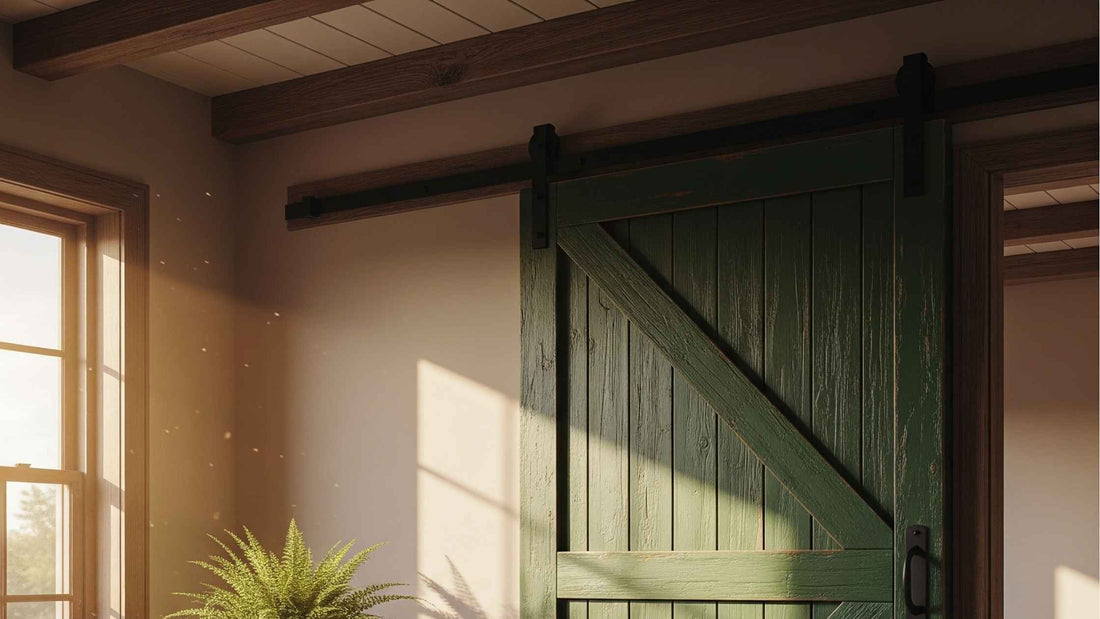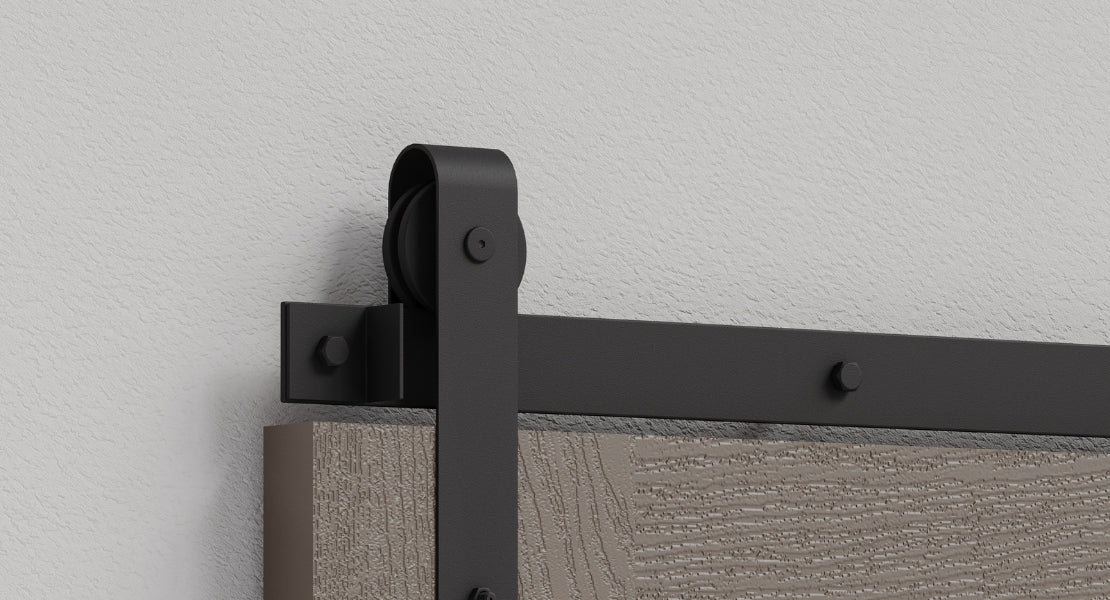
From Sage to Emerald | The Guide to Green Interior Design
In the world of color, few hues have the power to instantly ground and refresh a space like green. As the color of nature, green holds a unique place in our psyche, evoking feelings of harmony, renewal, balance, and growth. Integrating green interior design into your home is a powerful way to bring the serenity of the outdoors inside.
This guide will explore the art of using green effectively in your, touching on how to choose the right shades for different moods and spaces, along with integrating elements like barn doors to become integral parts of your green-themed design.
The psychology of green offers a dose of nature
Green is a central color in Biophilic Design—bringing natural elements into a built environment. Its psychological impacts are numerous and universally positive:
- Calming & restorative. The human eye processes green more easily than any other color, making it a relaxing and non-straining hue.
- Growth & renewal. Green is a symbol of new beginnings and growth, making it a great color for spaces to inspire and refresh.
- Balance & harmony. Placed in the middle of the color spectrum, green represents balance and stability, helping to harmonize space.
- Connection to nature. Simply being around green elements can remind us of the outdoors, enhancing a sense of general well-being.
Choosing the right shades of green
Green is not one size fits all. Its many shades offer a huge range of possibilities.
Soft & muted greens (Sage, Olive, Seafoam)
These shades create tranquil, sophisticated, vintage, and calming moods. Something like sage green interior paint are best for Bedrooms, bathrooms, and living rooms. These shades pair well with natural wood, cream, and soft browns
Bright & energetic greens (Lime, Kelly Green)
These shades create a vibrant, fresh, playful, and stimulating atmosphere. Light green interior paint is ideal for playrooms, home offices, and accent pieces.
Rich & dramatic greens (Emerald, Hunter Green, Forest Green)
Dramatic and dark green interior design schemes are luxurious, formal, elegant, and grounding. Some emerald green interior paint or material can be ideal for dining rooms, libraries, accent walls, and velvet upholstery.
Yellow-greens (Chartreuse, Moss)
Yellow-green shades feel lively, earthy, retro, and invigorating. These greens work perfectly as accents in living rooms or kitchens. They have a warmer undertone, making them feel less cool and more inviting.
Weaving green interior design into your home
Whether you use green as a dominant color or a subtle accent, here's how to integrate it effectively:
- A feature wall in a rich green can be a powerful statement. For a more subtle approach, paint a room in sage or mint.
- A large sofa upholstered in a dark emerald velvet or accent chair in moss green can be a stunning focal point.
- Use throws, pillows, or curtains in various shades of green to add layers and texture.
- Fill your home with houseplants of various sizes and shades. They add life, texture, and a direct connection to nature.
- Use green in smaller doses with items like vases, ceramics, books, or a collection of glassware.
How barn door installations grow with green design
A barn door, with its strong architectural presence and customizable finish, is the perfect tool for supporting and enhancing a green-themed interior. It can be a central part of the design, working either to blend seamlessly into a green palette or to provide a stunning contrast.
Use a green barn door as a focal point
A barn door in a rich, dramatic green wood paint creates an immediate, luxurious focal point. This is excellent for a dining room or a library, where the door can add a touch of sophisticated drama. For a more calming effect, a barn door painted in a soft sage or olive green can blend beautifully with similarly painted walls, creating a serene, monolithic look that doesn't disrupt the flow of the room.
Natural wood barn doors for grounding
Where does natural green come from? Trees! Rooms where green is the dominant color can be grounded by a barn door made of natural wood. The warmth and organic texture of the wood offer a powerful contrast to the coolness of the green, preventing the space from feeling overwhelming. A barn door made of reclaimed wood, with its weathered texture and earthy tones, can be a perfect companion to green, as both elements feel natural and organic, creating a sense of harmony.
Framing views of nature
In a biophilic-inspired space, a glass barn door with a green or black frame can be used to frame a view of your garden or green space. When the door is open, it creates a wide portal that connects the indoors to the outdoors. When closed, it allows light to filter in, enhancing the green elements inside. Barn doors are inherently space-saving, which helps maintain the open, airy feel essential for a home filled with green. They allow for a natural flow between rooms, mirroring a natural landscape.
Hardware as the finishing touch
A barn door handle made of a naturally-textured metal can add another layer of organic texture. Hardware in a warm brass or a cool chrome can be chosen to either complement or provide a striking contrast to the green, adding a final touch of design intention.
Begin your journey into green interior design
Green is an incredibly versatile and powerful color in interior design, offering a path to creating a home that is not only beautiful but also profoundly restorative.
Your barn door is an invaluable tool in this green revolution. Whether you choose to paint it a bold shade to create a stunning focal point, or use a natural wood door to provide an essential, grounding contrast, a barn door can seamlessly support and enhance your green design.
If you’re interested in learning more about barn doors and other interior design concepts, visit our blog today!


